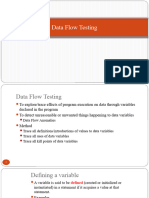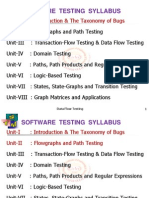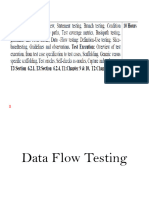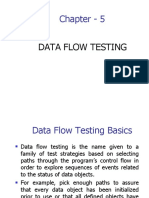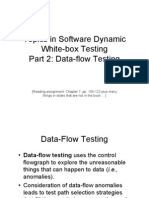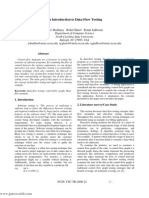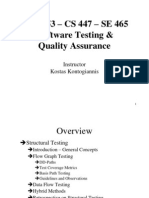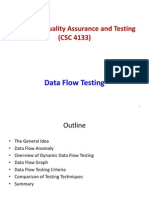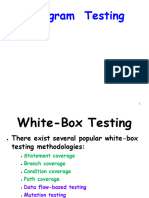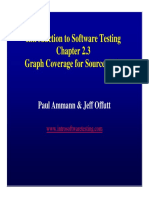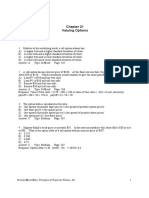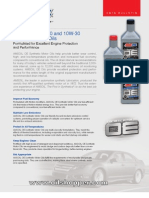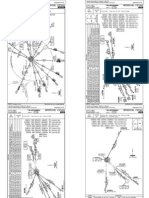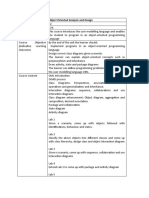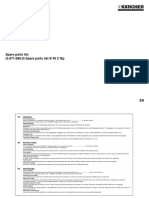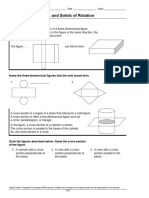0% found this document useful (0 votes)
20 views38 pagesData Flow Testing-I
The document discusses data flow testing, a white-box technique aimed at detecting improper use of data values in programming. It covers concepts such as definition-use (DU) chains, states of data objects, and data-flow anomalies, providing examples and explanations of how to identify potential bugs. Additionally, it highlights the importance of static data flow testing and presents a practical example to illustrate the concepts.
Uploaded by
Rahul DasCopyright
© © All Rights Reserved
We take content rights seriously. If you suspect this is your content, claim it here.
Available Formats
Download as PPTX, PDF, TXT or read online on Scribd
0% found this document useful (0 votes)
20 views38 pagesData Flow Testing-I
The document discusses data flow testing, a white-box technique aimed at detecting improper use of data values in programming. It covers concepts such as definition-use (DU) chains, states of data objects, and data-flow anomalies, providing examples and explanations of how to identify potential bugs. Additionally, it highlights the importance of static data flow testing and presents a practical example to illustrate the concepts.
Uploaded by
Rahul DasCopyright
© © All Rights Reserved
We take content rights seriously. If you suspect this is your content, claim it here.
Available Formats
Download as PPTX, PDF, TXT or read online on Scribd
/ 38



